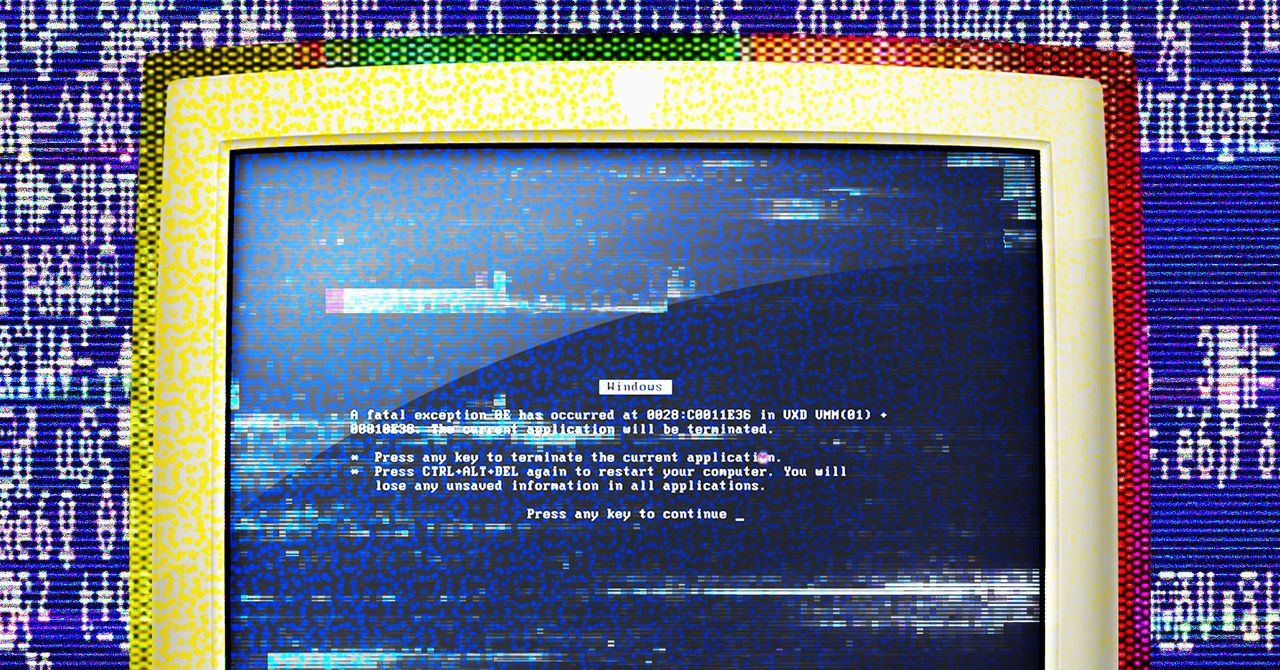After a long and storied history, Microsoft's BSOD is being replaced. WIRED takes a trip down memory lane to wave goodbye to the iconic screen we all love to hate.
Why it matters
- The Blue Screen of Death (BSOD) has been a significant part of Windows operating systems, symbolizing system failures and errors.
- Its replacement marks a shift in Microsoft's approach to user experience and system reliability.
- The change reflects advancements in technology and the evolving expectations of users regarding system stability.
For decades, the Blue Screen of Death (BSOD) has been synonymous with frustration for countless Windows users. This iconic blue screen, often appearing unexpectedly and signaling that something has gone wrong, has become an almost legendary aspect of the Microsoft operating system, a source of both annoyance and dark humor. However, as technology progresses, Microsoft has announced the phase-out of this infamous error message, paving the way for a more user-friendly error reporting system.
The BSOD first made its appearance in the early days of Windows, becoming a hallmark of the operating system's struggles with stability and error reporting. Over the years, it has undergone various transformations, adapting to changes in technology and user needs. Despite its notoriety, the BSOD has also become a point of nostalgia for many users who remember the countless times they encountered it, often at the most inconvenient moments.
As Microsoft prepares to retire the BSOD, the company is implementing a more modern and informative approach to error handling. The new system will feature a more user-centric design, aimed at providing clearer information about what went wrong and how users can address the issue. This shift is part of a broader initiative to enhance the overall user experience and reduce the confusion and panic that often accompanies encountering a critical error.
The decision to replace the BSOD is not merely cosmetic; it reflects significant advancements in technology. As operating systems evolve, so too do the expectations of users. Today’s users demand more intuitive interfaces and clearer communication from their devices. The shift away from the BSOD symbolizes Microsoft’s commitment to improving system reliability and offering users a more seamless computing experience.
One of the most significant changes that will accompany the retirement of the BSOD is the introduction of a new error screen that provides detailed information about the problem at hand. This new interface will not only inform users of an error but also guide them through troubleshooting steps to resolve the issue. By offering actionable solutions rather than leaving users in the dark, Microsoft aims to empower its users and reduce frustration during unexpected failures.
The BSOD's departure also highlights the evolution of the Windows operating system itself. As Microsoft moves towards a more integrated and resilient platform, the reliance on a single error message to communicate system failures becomes increasingly obsolete. Instead, the new approach will allow for more nuanced and context-aware error reporting. This is a significant step forward in how users interact with their technology, making it easier for them to navigate and resolve issues without the anxiety typically associated with the BSOD.
While some may mourn the loss of the BSOD, it is essential to recognize the positive implications of this change. The BSOD has served its purpose over the years, but in an era where user experience is paramount, it is time for a transformation. The new error reporting system is not just about aesthetics; it represents a fundamental shift in how technology companies view and prioritize customer interaction with their products.
As this transition unfolds, it will be interesting to observe how users adapt to the new error reporting interface. Will they embrace the change, or will they long for the days of the BSOD? Only time will tell. Nevertheless, the replacement of the BSOD is a significant milestone in the history of Microsoft and a reflection of the ever-evolving landscape of technology.
In this farewell to the BSOD, we acknowledge its role in shaping user experiences with Windows while looking forward to a future where technology communicates more effectively with its users. The end of the BSOD may signal the close of a chapter, but it also opens the door to a new era of computing that promises greater resilience and user empowerment.











